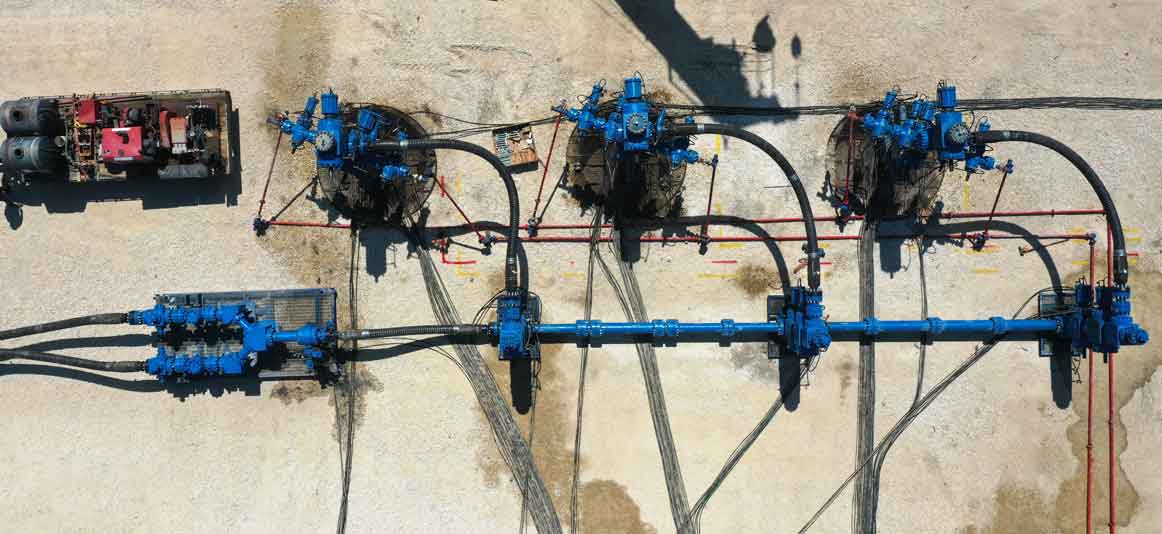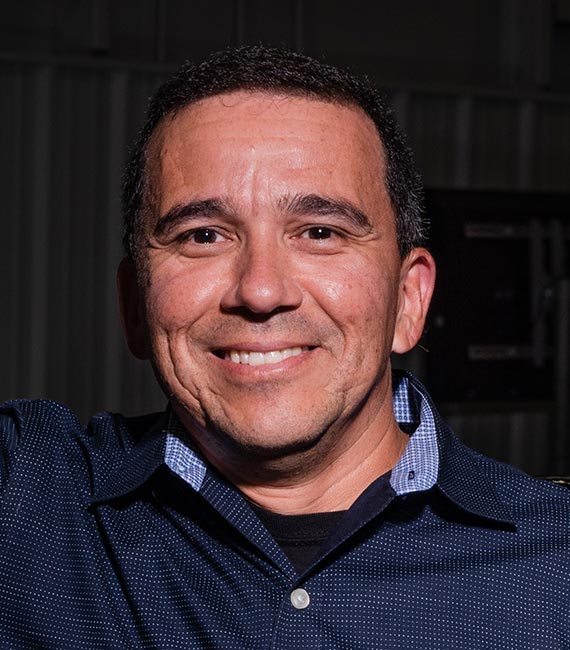Speed up multiwell pad rig-up with a flexible, erosion-resistant conduit that couples the frac manifold to the frac tree.
Advances in MonoFlex Technology Improve Operational Efficiency and Safety
已发表: 07/30/2020

Advances in MonoFlex Technology Improve Operational Efficiency and Safety
已发表: 07/30/2020


MonoFlex dual-connection fracturing fluid delivery technology has been on the market since 2018. What is it, and how was it developed?
The components associated with traditional frac fluid delivery can create significant risks during operations. Conventional frac fluid delivery systems are mainly made of multiple components connected to each other. During operations, NPT is associated with fluid leaks through the connections; therefore, the more connections there are, the higher the risk of NPT.
In 2016, we began identifying ways we could improve the customer experience by optimizing the delivery system for quicker rig-up on location with less equipment that is safer to install and manage. During the product planning phase, we determined it was necessary to provide
- a stronger connection that is resistant to the abrasiveness of the proppant in frac fluid
- flexibility to accommodate different well configurations
- reliability and versatility to enable rapid movement of equipment from one field location to another.
That is how the MonoFlex technology came about, and after extensive field trials, we were able to deploy the technology across North America unconventional basins in 2018.
What are the main benefits that customers are seeing by using the MonoFlex technology?
Customers have relayed that MonoFlex technology provides a simpler setup on location by eliminating the jungle of iron typically used with traditional frac fluid delivery systems in North America. They have mentioned that MonoFlex technology has reduced NPT due to leaks on frac iron, which normally are not as easy to spot and create delays in operations and additional risk when people have to chase the leaks.
Eliminating the leaks has a positive impact on the environment by preventing the frac fluids from being discharged to the atmosphere. Environmental benefits also include a cleaner and reduced footprint and reduction in pump horsepower consumption.
I have also received feedback regarding the MonoFlex technology’s mobilization and demobilization. It takes a fraction of the time to rig-up and rig-down the MonoFlex technology because of the number of connections and due to its flexibility, compared to other systems. Customers save on average 75% of rig-up and rig-down time vs traditional iron systems.
The main feedback is related to safety. This is because MonoFlex technology eliminates risk associated with the traditional high-pressure iron, such as lifting, tripping, accidental discharge, connection separation, and other issues related to the physical activity of handling iron.
Testing and field experience are important factors that potential customers evaluate when adopting a technology. Can you tell us about the testing and field experience of the MonoFlex technology?
Field testing was initially challenging because nothing like MonoFlex technology had been used before in onshore fracturing operations, specifically unconventional fracturing, which demands continuous operations. Many technical controlled lab and facility tests were performed to demonstrate that the technology met or exceeded industry safety requirements.
The first trials were in Canada. We worked with a customer to perform several risk assessments that helped us minimize risks before applying the technology in the field. After the first successful trial, the customer decided to continue using the technology in regular operations. The field trial started very interestingly because it happened in the midst of winter in Canada. This gave us a good indication of the technology’s performance under extreme low temperatures. Today, the customer still uses MonoFlex technology as part of its frac fluid delivery system.
What are some of the key elements that customers should look for when considering fluid delivery technologies?
Ensuring the safety of their employees and mitigating damage to equipment are two of the most crucial things for customers. They also look at reliability. This means customers are looking for a system that can withstand the operations with minimal maintenance and without leaks or NPT. The frac fluid delivery system is a key component of the frac operation; therefore, it must perform well. Any problem with the system may require the operations to be halted. Efficiency improvement in their operations is also important. Anything that can save time and reduce downtime so the frac operations can start as planned or ahead of schedule is key. The frac fluid delivery system contributes to efficiency by reducing setup time and eliminating issues related to leaks during pressure testing or during the middle of pumping activity.
What are some key milestones achieved since this technology became available on the market?
MonoFlex technology has been deployed in more than 1,000 wells in North America with zero NPT—a huge milestone. Because of the MonoFlex technology design, its performance compared with regular iron has surpassed expectations. For example, higher fluid velocity can be achieved through the MonoFlex technology compared with steel pipe, which results in less equipment used for long-range pumping rates. Also, the elimination of the turns that the fluid has to make compared with regular iron allows the fluid to be less turbulent, which reduces the wear of equipment and at the same time reduces pressure losses due to friction in the system.
The flexible design of the technology has also enabled our field team to rig up on tight-spaced locations in a very short time. Some of these locations would have taken a long time to rig up with regular pipe, and in some cases, it could have been very difficult to accomplish. Additionally, inspection can be done rapidly in the field. This enables moving the MonoFlex technology from one location to another without delays and without having to bring equipment to the shop for inspection.
Where has the technology been deployed, and would customers in other parts of the world benefit from this technology as well?
MonoFlex technology has been deployed across North America in areas of South Texas, West Texas, East Texas, and the Rockies. It has also been deployed in the northeastern United States, Canada, and most recently in Argentina.
This proven fit-for-basin technology for the North America market is ready to be deployed for any frac operation in the world. Our hope is to expand the technology in unconventional basins in the Middle East where there are similar fracturing and well start-up challenges as we have seen in the North American market. Any customer working on completing their wells will benefit from using MonoFlex technology as an essential component of surface equipment on their fracturing operations not only by significantly reducing rig-up and rig-down time but by also reducing HSE risks to their employees and the environment. We look forward to working with customers to meet all of these needs.

